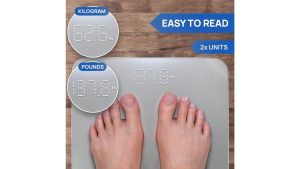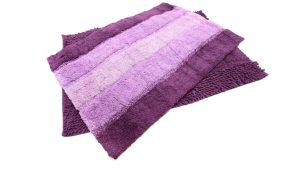How to Fix a Dripping Shower Head: Quick Leak Solutions

To fix a dripping shower head, first, turn off the water supply. Then, disassemble the shower head and replace any worn-out parts.
A dripping showerhead can be both annoying and wasteful. Leaks can increase your water bill and cause long-term damage. Fixing it yourself is often simple and requires minimal tools. By addressing the issue promptly, you can save water and avoid potential problems.
This guide will help you understand the steps involved in fixing a dripping showerhead. Whether it’s a worn-out washer or a clogged nozzle, most issues can be resolved quickly. Read on to learn how to efficiently stop that persistent drip and restore your shower to perfect working condition.
Introduction To Dripping Shower Head Issues
There is more to a dripping showerhead than an annoyance. It can waste water and raise your bills. Understanding the issue helps in fixing it quickly.
In this section, we’ll explore common causes and why it’s important to act quickly.
Common Causes
Several factors can lead to a dripping shower head. Here are the most common ones:
- Worn-out washers: Washers wear out over time and cause leaks.
- Mineral build-up: Hard water can leave minerals that block the shower head.
- Faulty valve seats: These can become corroded and cause leaks.
- Loose parts: Loose or damaged parts can lead to drips.
Why You Should Act Quickly
Fixing a dripping shower head quickly is crucial. Here are a few reasons:
- Save water: A dripping shower head can waste gallons of water daily.
- Lower bills: Reducing water waste can lower your utility bills.
- Prevent damage: Continuous dripping can cause water damage over time.
- Peace of mind: Fixing the issue can relieve stress and irritation.
Tools And Materials Needed
Fixing a dripping shower head can save water and lower your water bill. You need the right tools and materials to get the job done. Below is a detailed guide on what you need to fix your shower head.
Basic Toolkit
A basic toolkit will include essential tools for the job. Make sure you have these tools handy:
- Adjustable Wrench: This is useful for loosening and tightening nuts.
- Pliers: Pliers help in gripping and turning small parts.
- Screwdriver Set: Both flat-head and Phillips screwdrivers will be needed.
- Plumber’s Tape: This tape seals pipe threads to prevent leaks.
- Bucket: Use a bucket to catch any dripping water.
- Rags or Towels: Rags help in cleaning and drying the area.
Replacement Parts
Sometimes, you may need to replace worn-out parts. Here are some common replacement parts:
- Rubber Washers: These washers often cause leaks and may need replacing.
- O-rings: O-rings help in sealing the shower head and faucet.
- Cartridge: Some shower heads have a cartridge that controls water flow.
- Shower Head: If your shower head is old, consider replacing it entirely.
| Tool | Use |
|---|---|
| Adjustable Wrench | Loosen and tighten nuts |
| Pliers | Grip and turn small parts |
| Screwdriver Set | Remove and insert screws |
| Plumber’s Tape | Seal pipe threads |
| Bucket | Catch dripping water |
| Rags or Towels | Clean and dry the area |
Having the right tools and materials makes the job easier. Ensure you have everything you need before starting.
Identifying The Type Of Shower Head
Before you can fix a dripping shower head, you need to identify its type. Knowing your shower head type helps you find the right tools and replacement parts. This step is crucial for a successful repair.
Single-handle Vs. Dual-handle
Shower heads often come with single-handle or dual-handle controls. A single-handle shower head has one knob to control both water temperature and flow. It’s easier to use and install.
On the other hand, a dual-handle shower head has two separate knobs. One knob controls hot water, and the other controls cold water. Dual-handle systems offer more precise temperature control.
| Feature | Single-Handle | Dual-Handle |
|---|---|---|
| Control | One knob | Two knobs |
| Temperature Adjustment | Combined | Separate |
| Ease of Use | Simple | More precise |
Fixed Vs. Handheld
Shower heads can also be fixed or handheld. A fixed showerhead is attached to the wall. It stays in one position and is often more durable.
A handheld shower head comes with a flexible hose. You can detach it and move it around. This type is useful for washing pets or cleaning the shower.
- Fixed Shower Head: More durable, stays in one position.
- Handheld Shower Head: Flexible, easy to move, good for multiple uses.
Understanding these types helps you figure out the best way to fix a drip. Each type has its own set of issues and solutions. Make sure to identify your shower head correctly before starting the repair.
Initial Steps Before Repair
Fixing a dripping shower head can save water and reduce your bills. Before diving into the repair, it’s crucial to take some initial steps. These steps ensure a smooth and clean repair process. Let’s go through them one by one.
Turning Off the Water Supply
The first step is to turn off the water supply. This prevents any water from leaking while you work.
- Locate the water shut-off valve. It’s usually near the shower or in the basement.
- Turn the valve clockwise to shut off the water.
- Open the shower tap to drain any remaining water.
Make sure the water is completely off before starting the repair. This step is crucial to avoid water damage.
Protecting Your Work Area
Next, protect your work area to keep it clean and avoid any damage.
- Lay a towel or plastic sheet on the floor. This catches any water and protects the floor.
- Place a bucket under the shower head. This will catch any drips.
- Keep a small bowl handy. You can place screws and small parts in it.
These simple steps help maintain a tidy workspace. They also make it easier to find small parts during the repair.
By following these initial steps, you set the stage for a successful showerhead repair. Remember, preparation is key to a smooth and efficient fix.
Fixing A Leaky Single-handle Shower Head
Fixing a leaky single-handle shower head can save water and reduce your water bill. A steady drip can be annoying, but you can fix it yourself. Follow these steps to stop the drip and enjoy a dry bathroom.
Disassembly Process
The first step is to turn off the water supply. This will prevent any water from spraying when you take the shower head apart. Use a wrench to remove the handle. Be careful not to scratch the surface.
Next, remove the escutcheon plate. This is the flat part covering the hole in the wall. You can use a screwdriver to take it off.
Once the plate is off, you will see the cartridge. The cartridge is the part that controls the flow of water. You need to take out the cartridge to inspect it.
Replacing The Cartridge
If the cartridge is worn out, you need to replace it. First, take the old cartridge to the store. This will help you find the right replacement part.
Before installing the new cartridge, clean the inside of the valve. Use a cloth to wipe away any debris or buildup.
Insert the new cartridge into the valve. Make sure it fits snugly. Reassemble the shower head by reversing the disassembly steps.
Turn on the water supply and test the shower. If the drip is gone, you have successfully fixed your leaky shower head!
Repairing A Dual-handle Shower Head Leak
A dual-handle shower head can leak for various reasons. Fixing it is easy with the right tools and steps. A few common problems include a worn washer or a faulty valve. Follow these steps to fix a leaking dual-handle showerhead.
Valve And Seat Inspection
Inspecting the valve and seat is the first step. Turn off the water supply to the shower. Remove the handle using a screwdriver. Pull out the valve stem from the wall.
Look for signs of wear or damage on the valve. Check the seat for corrosion. Use a flashlight to inspect the seat inside the valve body. If it is damaged, replace it with a new one.
Washer Replacement
Replacing the washer is another common fix. Remove the old washer from the valve stem. Take the old washer to a hardware store to find the correct size.
Install the new washer onto the valve stem. Ensure it fits snugly. Reinsert the valve stem into the wall. Secure it with the retaining nut.
Reattach the handle with the screws. Turn on the water supply. Test the shower head to check if the leak has stopped.
| Step | Action |
|---|---|
| 1 | Turn off the water supply |
| 2 | Remove the handle |
| 3 | Inspect the valve and seat |
| 4 | Replace the washer |
| 5 | Reattach the handle |
| 6 | Turn on the water and test |
By following these steps, you can easily fix a leaking dual-handle showerhead. Regular maintenance can help prevent future leaks. Keep your tools handy for quick repairs.
Sealing And Finishing Touches
Fixing a dripping shower head can be a rewarding DIY task. Once you’ve addressed the main issues, it’s crucial to seal and finish properly. This ensures your fix lasts long and prevents future leaks how to fix a dripping shower head.
Applying Plumber’s Tape.
Plumber’s tape, also known as Teflon tape, helps create a watertight seal. Wrap the tape around the threads of the shower arm. Make sure to wrap it in the direction of the threads.
- Start by cleaning the threads to remove any old tape or debris.
- Wrap the tape around the threads 2-3 times.
- Press the tape into the threads to ensure a good seal.
Reassembling And Testing
After applying the tape, it’s time to reassemble the shower head. Carefully screw the shower head back onto the shower arm. Use a wrench if necessary, but avoid over-tightening.
- Screw the shower head back onto the arm by hand.
- Use a wrench to tighten it slightly, if needed.
- Turn on the water to check for leaks.
If there’s still a drip, you may need to reapply the tape. Repeat the process until the leak stops.
Preventive Measures And Maintenance
Keeping your shower head in top shape ensures a pleasant shower experience. It also helps save water and money. Regular Drips and clogs can be prevented with regular maintenance.
Tips for regular cleaning
Regular cleaning is crucial for a well-functioning shower head. Hard water deposits can build up and cause blockages. Follow these steps to keep your shower head clean:
- Remove the shower head. Soak it in a solution of vinegar and water.
- Use a small brush to scrub away any debris or mineral deposits.
- Rinse thoroughly with water. Reattach the shower head.
- Repeat this process every three months to prevent build-up.
When To Seek Professional Help
Sometimes, cleaning isn’t enough. Persistent leaks or significant damage may need professional attention. Here are some signs to look out for:
- The shower head continues to drip after cleaning.
- You notice water pressure issues that don’t improve.
- There are visible cracks or severe wear and tear.
In these cases, call a professional plumber. They can diagnose and fix the issue effectively.
Frequently Asked Questions
How Do You Stop A Shower Head From Dripping?
To stop a shower head from dripping, tighten the connections, replace worn washers, or install a new O-ring.
Why Is My Shower Dripping When Turned Off?
Your shower drips because of a worn-out washer, faulty valve, or sediment buildup. Replace parts or clean components.
Why Is My Shower Head Tap Leaking?
A leaking shower head tap is often caused by a worn-out washer or damaged O-ring. Replacing these parts usually fixes the issue.
Is It Normal For Shower Head To Drip A Little?
Yes, a slight drip from a shower head can be normal. It often occurs due to residual water.
How Can I Stop My Shower Head From Dripping?
Check the washer or O-ring. Replace if worn out.
Why Is My Shower Head Leaking?
A worn-out washer or O-ring usually causes leaks.
What Tools Do I Need To Fix A Dripping Shower Head?
You need a wrench, a plumber’s tape, and a new washer.
Can A Dripping Shower Head Increase My Water Bill?
Yes, it can significantly increase your water bill.
How Often Should I Check My Shower Head For Leaks?
Check your shower head every six months for leaks.
Is It Easy To Fix A Dripping Shower Head?
Yes, it’s a simple DIY task for most people.
Conclusion
Fixing a dripping showerhead is simple with the right steps. Regular maintenance prevents future leaks. By following this guide, you save water and money. Enjoy a stress-free shower experience. Keep your bathroom in top shape effortlessly. Share these tips with friends and family for a leak-free home to fix a dripping shower head.

:max_bytes(150000):strip_icc()/how-to-fix-a-leaking-shower-head-4154274-hero-96869029aa204b64abe6ecc27bd82d55.jpg)












